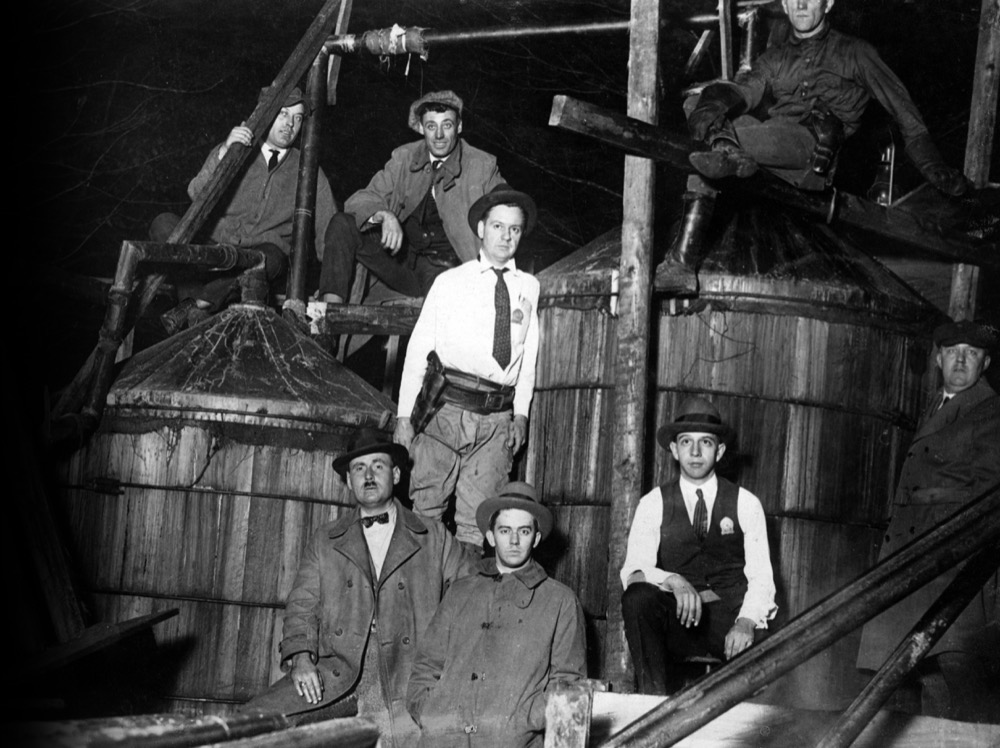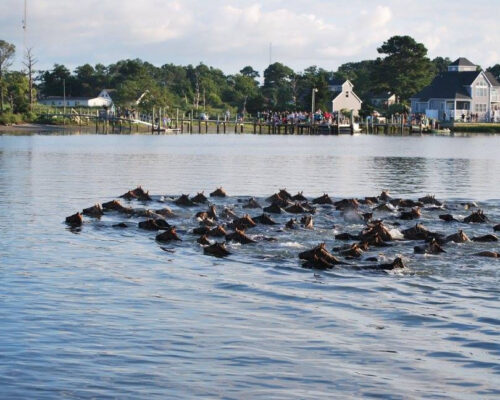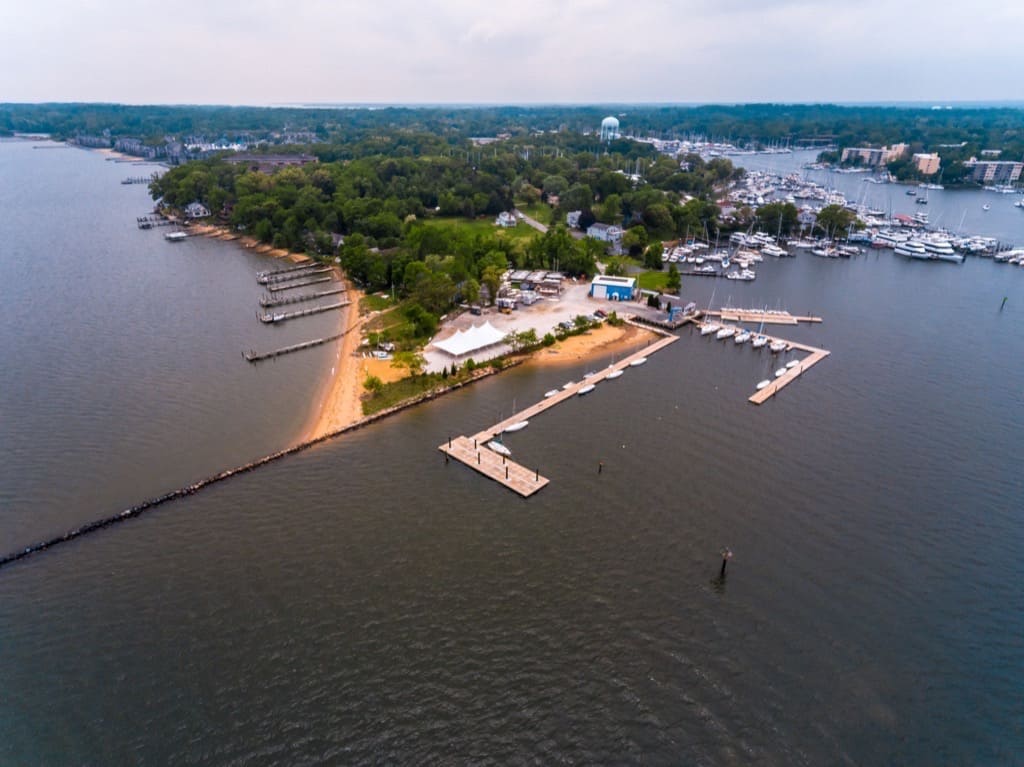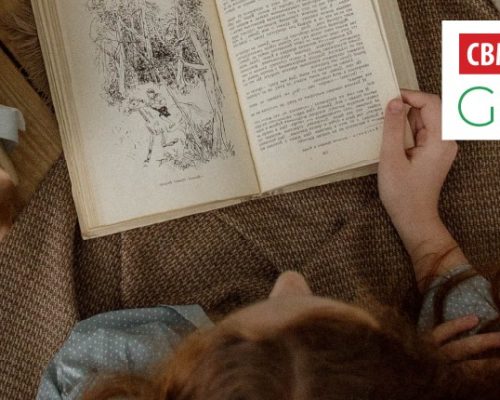Prohibition on the Chesapeake Bay
On a moonless night in the Roaring Twenties, a motor launch with no running lights glided quietly through the
marsh on Virginia’s lower Eastern Shore. It paused at a waterside clam-shucking house near Red Bank, a knot of half a dozen working-class homes along a mud-banked creek. On board was a cargo of 514 sacks of liquor in bottles. The sacks were stashed in the clam house and the boat disappeared into the marsh.
But a Coast Guard patrol had caught wind of the booze landing and was snooping around the village. Coast Guard agents found the booze and arrested four men who were later reported to “have noteworthy reputations for being extremely dangerous to handle.” The booze and the men were taken to Norfolk, facing federal charges.
This was Prohibition in the Chesapeake region.
On January 17, 1920, the 18th Amendment to the Constitution went into effect, prohibiting the “manufacture, sale, or transportation of intoxicating liquors for beverage purposes.” The Volstead Act, or National Prohibition Act, was passed by Congress to provide a framework for enforcing the new amendment, and states began their own enforcement.
H.L. Mencken, The Sage of Baltimore, wrote in 1924, “Oppressive laws … simply make bootleggers.” He was right. Despite strenuous efforts by federal and most state law enforcement, Prohibition led to the cataclysmic growth of organized crime in America, including bootlegging, rumrunning, and moonshining, and failed to prevent large-scale availability of booze.
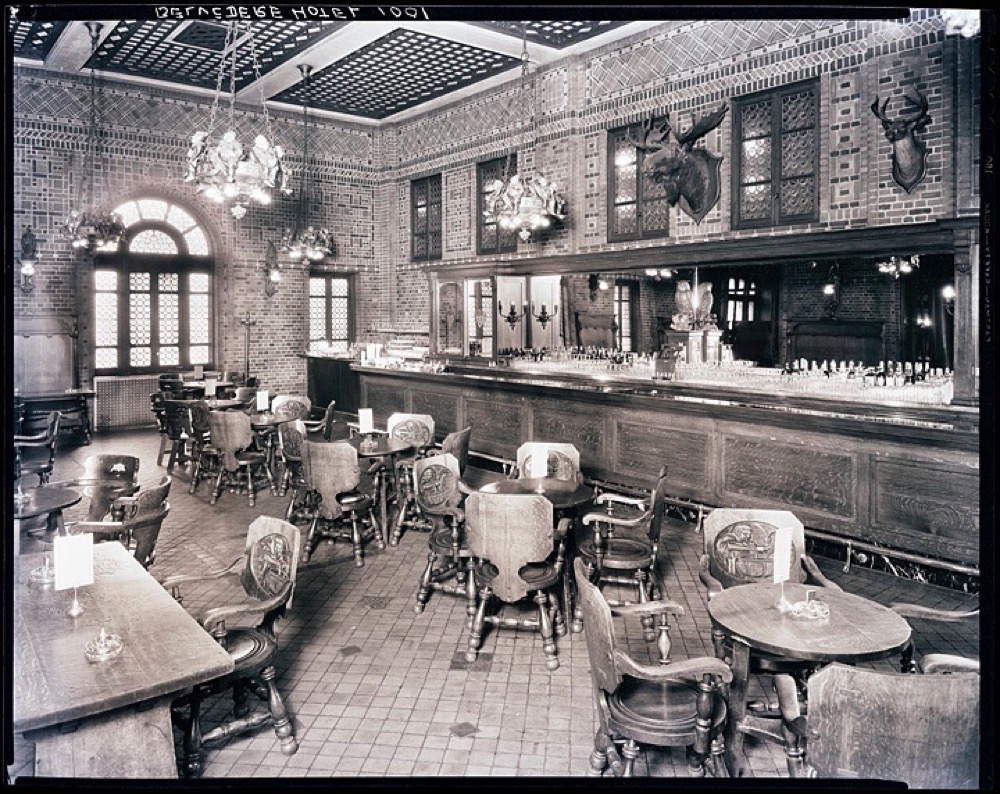
Many believe that banning alcohol actually encouraged Americans to drink. Depression-era humorist Will Rogers joked, “During Prohibition, it was said tailors would ask customers what size pockets they wanted—pint or quart.”
Spurred on by the Anti-Saloon League and hatchet-wielding Carrie Nation, who once busted up a poolroom in the Eastern Shore railroad town of Parksley, the Commonwealth acted ahead of the federal law. In 1916, Virginia outlawed what evangelizing anti-booze crusader Reverend Billy Sunday called “God’s worst enemy and Hell’s best friend.”
Norfolk was one of the “wettest” locations in the state. Its 115 bars largely ignored the state ban on alcohol. But on the eve of national prohibition, as many as 15,000 triumphant teetotalers swarmed the city. At midnight, patrons at the packed bar at the Monticello Hotel made toasts, drained their glasses, and smashed them on the bar floor. Out in the street, bar signs and billboards advertising booze were being torn down throughout the city.
Maryland, an avowed “wet” state, took the opposite attitude. It was the only state that never passed statewide laws to enforce prohibition. Maryland Governor Albert Ritchie reportedly directed state police to turn a blind eye to speakeasies as long as they paid state taxes. Many Baltimore and Annapolis speakeasies masqueraded as cigar stores, with a display case of cheap cheroots in the front room and a hopping booze joint in the back.
Nevertheless, Maryland speakeasies had to be creative to avoid the attention of federal agents. At the Owl Bar at the Belvedere Hotel on Chase Street in Baltimore, two owls hung over the cash registers. Thirsty visitors knew to look at the owl’s glass eyes. If the owls’ eyes were glowing steadily, tipplers would be disappointed, but if the eyes were blinking, booze was flowing.
The Owl Bar is still pouring drinks and is listed by the National Trust for Historic Preservation. Several other Baltimore establishments have Prohibition provenance, including The Horse You Came In On Saloon and Penny Black, both in Fells Point. (For a taste of the era, turn to Chesapeake Cocktail on page 82.)
he town at Rehoboth Beach, Del. was established as a Christian resort in 1873 and alcohol was banned. But within a few years the ban was lifted, and alcohol flowed until national prohibition kicked in in 1920. In 1929, the Women’s Christian Temperance Union erected a water fountain on the boardwalk to give parched beachgoers an alternative to beer and whiskey. The elaborate granite fountain still stands at the end of Rehoboth Street, just a few doors down from Whiskey Jack’s bar.
If most alcohol was banned during Prohibition, where did all the illegal hooch come from? Moonshiners and rumrunners.
Prohibition gave unprecedented encouragement to Maryland and Virginia moonshiners as demand and prices spiked. They ramped up production and transported the liquor in fast cars and boats to local tipplers as well as customers in nearby cities.
Prohibition also put the Chesapeake Bay region at the center of the newly lucrative world of rumrunning. Smuggling foreign-made booze into the United States was largely organized and financed by criminal gangs based in large cities, sometimes with the help of local people.
The marshes, creeks, bays, and tiny villages of the Delmarva peninsula were prime territory for landing booze supplied by the boats of “Rum Row.” Rum Row was a rotating gallery of foreign ships that sat at sea just outside U.S. territorial waters from Boston to the North Carolina border.
These ships were laden with top-shelf booze and wines—Scotch whisky from Edinburgh and Glasgow, blended whiskey from Canada, Champagne and cognac from France, rum from Cuba. Rum Row welcomed any boat to tie up and pay cash for name-brand, contraband booze by the case. Crews of visiting boats were often given free samples, and captains left with extra bottles to ensure return business.
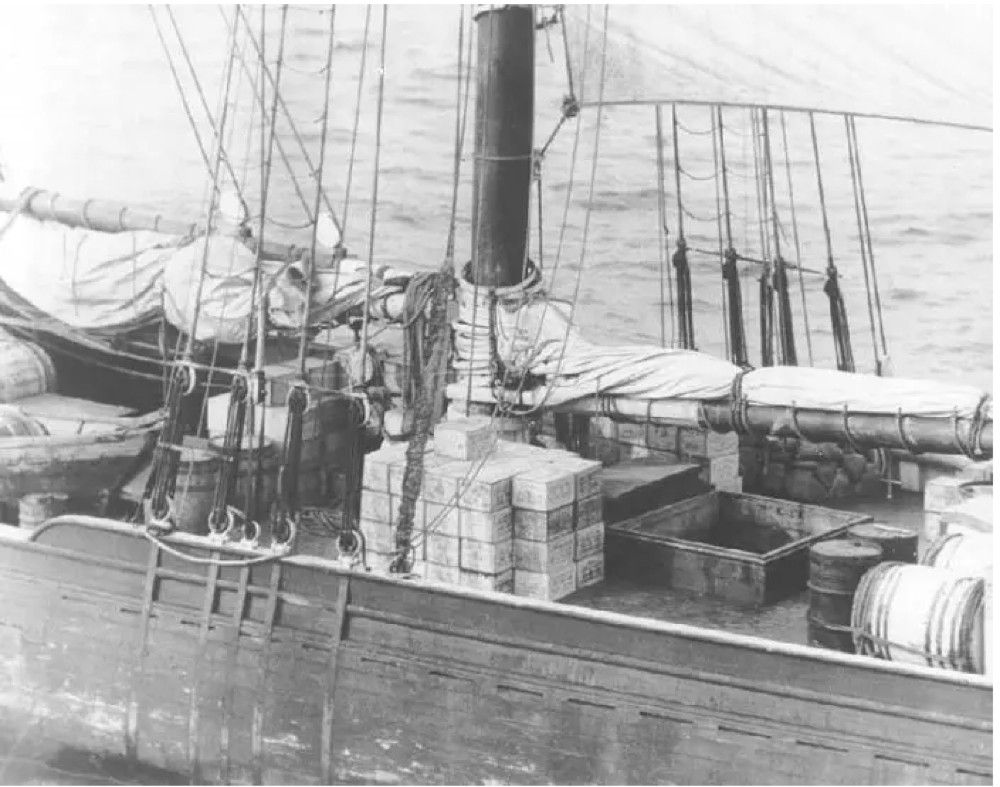
The trick was to get the booze from international waters where the Coast Guard had no jurisdiction into cocktail glasses in Baltimore, Philadelphia, D.C., and New York. Crime syndicates often pooled money and hired speedboats to carry hundreds or even thousands of cases at a time from Rum Row to shore. Local fishermen were sometimes paid to transport booze for gangsters, using their knowledge of the local waters to evade the Coast Guard and slip into local wharfs unnoticed.
Another daring strategy was to carry booze straight through the mouth of the Chesapeake, either in a mad dash on a fast boat or in a respectable-looking fishing boat or pleasure craft in the hopes of avoiding attention. Once safely past Coast Guard cruisers at the mouth of the Bay, smuggled booze could be off-loaded at an out-of-the-way creek or even brought directly to the docks at Norfolk, Baltimore, or D.C.
Eric Mills, in Chesapeake Rumrunners of the Roaring Twenties, tells the tale of the Rum Row ship Istar, known as the “flagship of the rum fleet.” In the spring of 1923, the Istar, loaded with 33,000 cases of whisky from Glasgow, arrived at the mouth of the Chesapeake. The Shriner’s Convention was scheduled for Washington, D.C. The Coast Guard knew thousands of cases of booze would be flowing by car up the Delmarva Peninsula and by boat up the Chesapeake Bay to slake the thirst of the Fez-wearing delegates.
Speedboats carrying thousands of cases had already loaded up at the Istar and slipped into the Bay despite the Coast Guard’s efforts. The arrival of the Coast Guard cutter Apache, replete with machine guns and cannon, ultimately scared the Istar farther north, but not before an estimated 8,000 cases of Scotch made its way to the nation’s capital where Shriners were paying up to $120 for a case.
Prohibition was not all speakeasies, gangsters, fast boats, and shootouts. The new laws criminalized what had been a routine part of life along the Chesapeake Bay for centuries. Court records in Eastville, Va., the county seat of Northampton County, give a glimpse how hundreds of average people—white and Black, women and men—became enmeshed in the great national experiment to legislate morality.
On September 25, 1918, a young Mr. Chesler was arrested for bringing 19 pints of distilled liquor to Northampton County from New York. The court records hint at Chesler’s defense. His lawyer unsuccessfully asked that the jury be instructed, “If you believe from the evidence that the defendant purchased the whiskey from New York at the request of his father for the purpose of using it in the treatment of the defendant’s sisters in sickness, you shall not impose a jail sentence if you find the defendant guilty.” Despite his ailing sisters, Chesler was fined $50 and sentenced to 30 days in jail.
But repeat offenders could get real time. In May 1922, a private detective from Norfolk named James Whidbee was working in Eastville, investigating “vice and violations of the prohibition law.” Whidbee claimed he was sold “about a half-pint of corn liquor in a coco [sic] cola bottle” from George Satchell, a charge Satchell denied. However, it came out that Satchell had multiple previous convictions for selling illegal liquor. A jury found Satchell guilty and sent him to the state penitentiary for five years. The severity of the sentence for selling fewer than six shots of liquor evidently took into account the repeated nature of his violations.
Local police were also active in the community, trying to ferret out prohibition violations. On the 4th of July, 1928, Northampton Constable J.R. Belote executed a search warrant looking for illegal booze at the restaurant of Edward Bloxom in Eastville. The search yielded “one pickle jar containing one pint and one jug containing 3 quarts.” But the jury found Bloxom not guilty, perhaps unwilling to convict a respected local businessman for such a paltry violation.
Out-of-state rumrunners carrying booze from the ships of Rum Row were also in the sights of the local police. In October 1932, Mr. C.B. Cherrix was apprehended in an Oldsmobile full of booze displaying Maryland license plates. Cherrix was prosecuted and his car was impounded and sold at auction, but it brought just $61. After deducting advertising for the sale, the Sheriff’s commission, storage, and court costs, there was just $7.95 left to transmit to the state’s Literary Fund, as required by state law.
There were dozens of arrests in Northampton County for operating illegal stills during Prohibition. In November 1929, a Justice of the Peace swore out a warrant for constables to search the buildings belonging to John Dryden and his wife Mary near Jamesville, not far from today’s YMCA Camp Silver Beach. Four lawmen descended on the Dryden’s property and found “one five-gallon keg whiskey, one gallon jug whiskey, and one 7 quart [keg] whiskey in the barn…One still made of copper capacity 20 gallons in home on said premises.” His indictment notes that Dryden was not a duly licensed druggist and had no permit to operate a still. He was sentenced to 90 days in jail and a fine of $50.
The Northampton County court records also chronicle frequent prosecutions for “driving under the influence of an intoxicating substance” during Prohibition. Under prohibition laws, the act of drinking alcohol was not itself punishable, but drinking and driving most absolutely was and occurred with regularity.
Ultimately, it became clear that the Volstead Act was unenforceable and that Prohibition had many unexpected consequences including runaway crime, high levels of alcohol consumption, and lost federal and state tax revenue. At 5:32 p.m. on December 5, 1933, national prohibition ended with the ratification of the 21st amendment.
Surprisingly, the 21st amendment did not end the federal government’s appetite for legislating morality by banning widely popular substances. Passage of the “Marihuana Tax Act” in 1937 effectively made pot illegal across the United States. This latest experiment in prohibition appears to be grinding to an end as states and the federal government are relearning the lessons learned by our great-grandparents when they tried to enforce the only constitutional amendment that restricted rather than expanded American’s rights.
I’d like to extend sincere thanks to Traci L. Johnson, Clerk of Court in Northampton County, Va., and her outstanding staff of Lauren Brown, Susie Sample, and Connie Wilson, who provided invaluable assistance in researching this article. Northampton County, Va. is home to the oldest continuous county court records in the United States, dating back to 1632.

